Blog
Hannah Duston: Monumental Dilemma
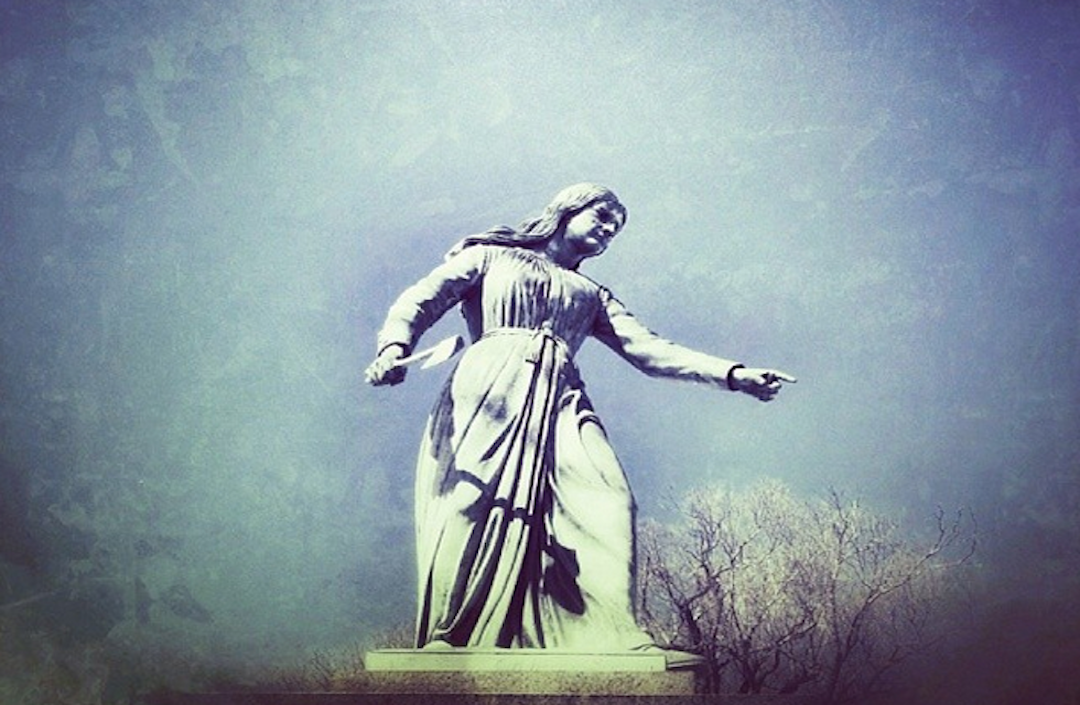
Post by Jessica Harper
Audio segment from Roman Mars’ radio show ‘99% Invisible’ Episode 113: Monumental Dilemma, detailing the controversial story and monument of Hannah Duston, Boscawen, New Hampshire, erected in 1874. Duston was kidnapped with her daughter and nursemaid in 1637 by a band of Abenaki Native Americans who murdered her daughter. Duston and her fellow captives killed 10 of their Abenaki captors in Boscawen, including 6 children, scalped each victim and escaped back to Haverhill, Massachusetts. The monument depicts Duston holding a tomahawk in one hand and a handful of scalps in the other. Her story is controversial: is she a heroine for escaping captivity or a villain for the brutality she wielded towards the Abenaki, and...
Prometheus Bound and Personhood
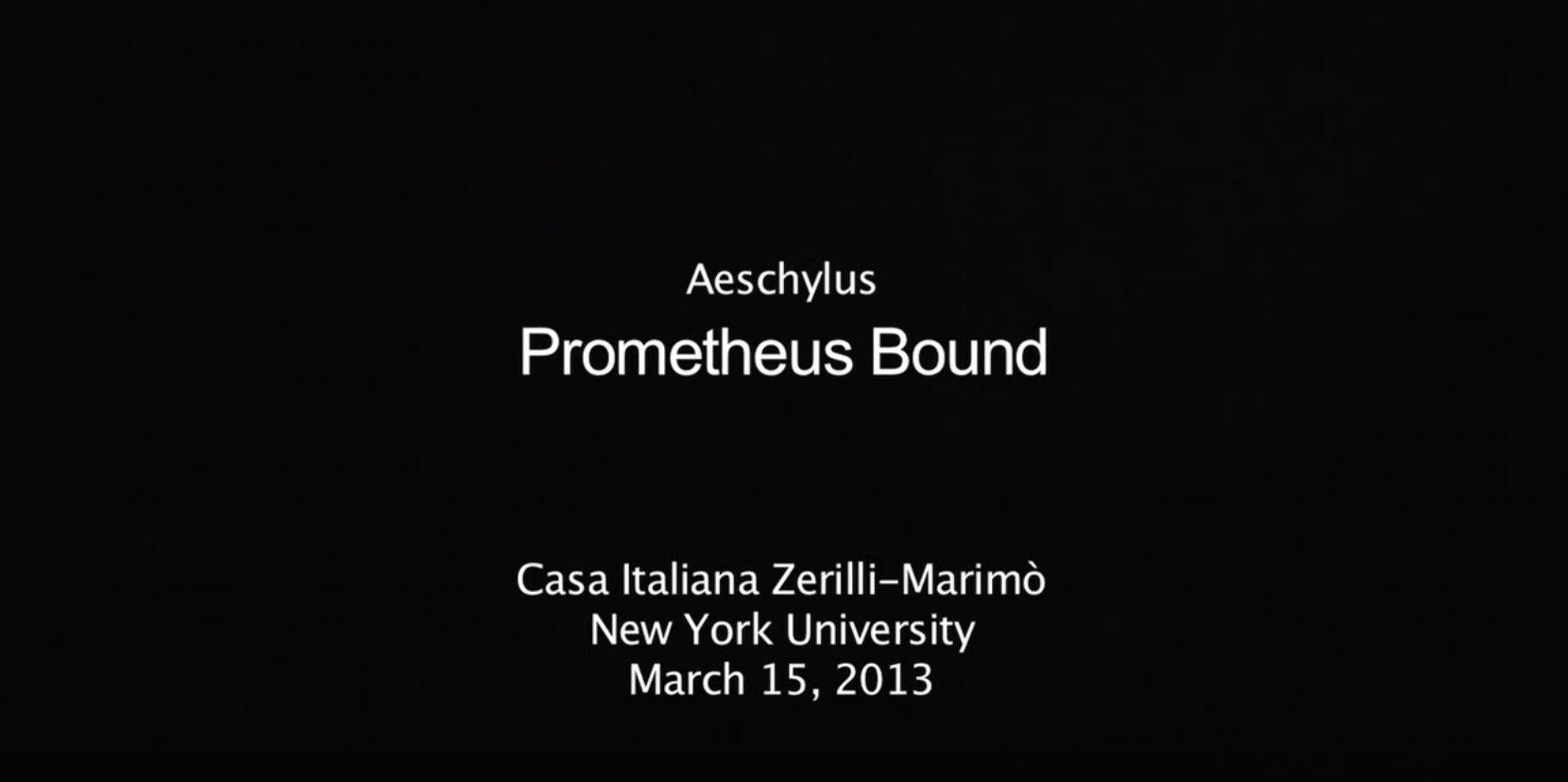
A performance of Aeschylus’ Prometheus Bound at NYU’s Department of Italian Studies in March 2013, directed by and starring Francesco Andolfini. In the 6:11 - 7:41 segment, Prometheus laments his imprisonment by the tyrant, Zeus. In ancient Athenian society, a great weight was placed on free citizenship and thus Prometheus’ imprisonment was intended as a direct assault on this key aspect of his personhood.
Capital Punishment Legislation in North Carolina: A Tale of Two Moratoriums

Capital Punishment Legislation in North Carolina: A Tale of Two MoratoriumsBy Amani Carson and Nivedha Ram
In 1972, the Supreme Court ruled on Furman v. Georgia that states’ indiscriminate and inconsistent applications of capital punishment were in violation of both the Eighth and Fourteenth Amendments of the United States Constitution.1 This ruling began a national moratorium. Several states, including North Carolina, responded by revising their capital punishment protocols to satisfy the court’s concerns.
According to legal scholar Cynthia Adcock, North Carolina implemented one of the harshest, most pitiless death penalty laws in the nation – imposing a mandatory death sentence on anyone convicted of first-degree homicide with aggravating circumstances. It only took the state two years to repopulate...
Indiana Medical History Museum: Complexities in Telling Stories

The Indiana Medical History Museum is the Old Pathology building which stands on the grounds of the old Central State Hospital of Indiana. The museum is currently reimaging the story they tell about the history of Central State Hospital. Here are some keys questions that the museum is asking themselves. “How do we interpret a place that no longer exists?”
Courtesy of: Indiana Medical History Museum
“Whose story do we tell – the doctor’s, the patient’s, the staff’s, the neighborhood’s?”
Courtesy of: Indiana Medical History Museum
“How do we balance the story without being celebratory or overly critical?”
Courtesy of: Indiana Medical History Museum
“How do we respect...
Access Denied

As a part of our class on the architecture of immigrant detention centers I called the South Texas Detention Facility in Pearsall to request a tour. After several attempts to reach the right person, and waiting on hold for approximately 10 minutes, I was told: “we don’t give tours.” No. And why would they? ICE contracts the management of The South Texas Detention Facility to a private corporation, GEO Group, Inc. As a private corporation they do not need to accommodate the public. And yet, they are paid, in part, by ICE—they are financed by public monies to facilitate an “administrative” duty, the processing of immigration. Since I failed to secure a tour through Geo Group, I filed a Freedom...
From the Gallows to the Chair

In 1910, Henry Spivey was hanged for murder in Bladen County. At this last public stateexecution, The Charlotte Observer reported that as many as a thousand people witnessed thehanging. Spivey was the last person to be hanged in North Carolina; following his death, a newlaw sent the condemned to death row in the electric chair in Raleigh’s Central Prison. With theswitch from public hangings to more private executions, the state broke away from punishmentthat publicly made the tortured criminal an object of “pity or glory.” North Carolina drew a curtain over the process of death and legitimized the state’s power over the execution process.
Newspaper clipping from 1910 noting the final state-sanctioned hanging in North Carolina. Credit:...
A Legacy of Prison Abolitionism: Anthony Rayson (1954- )
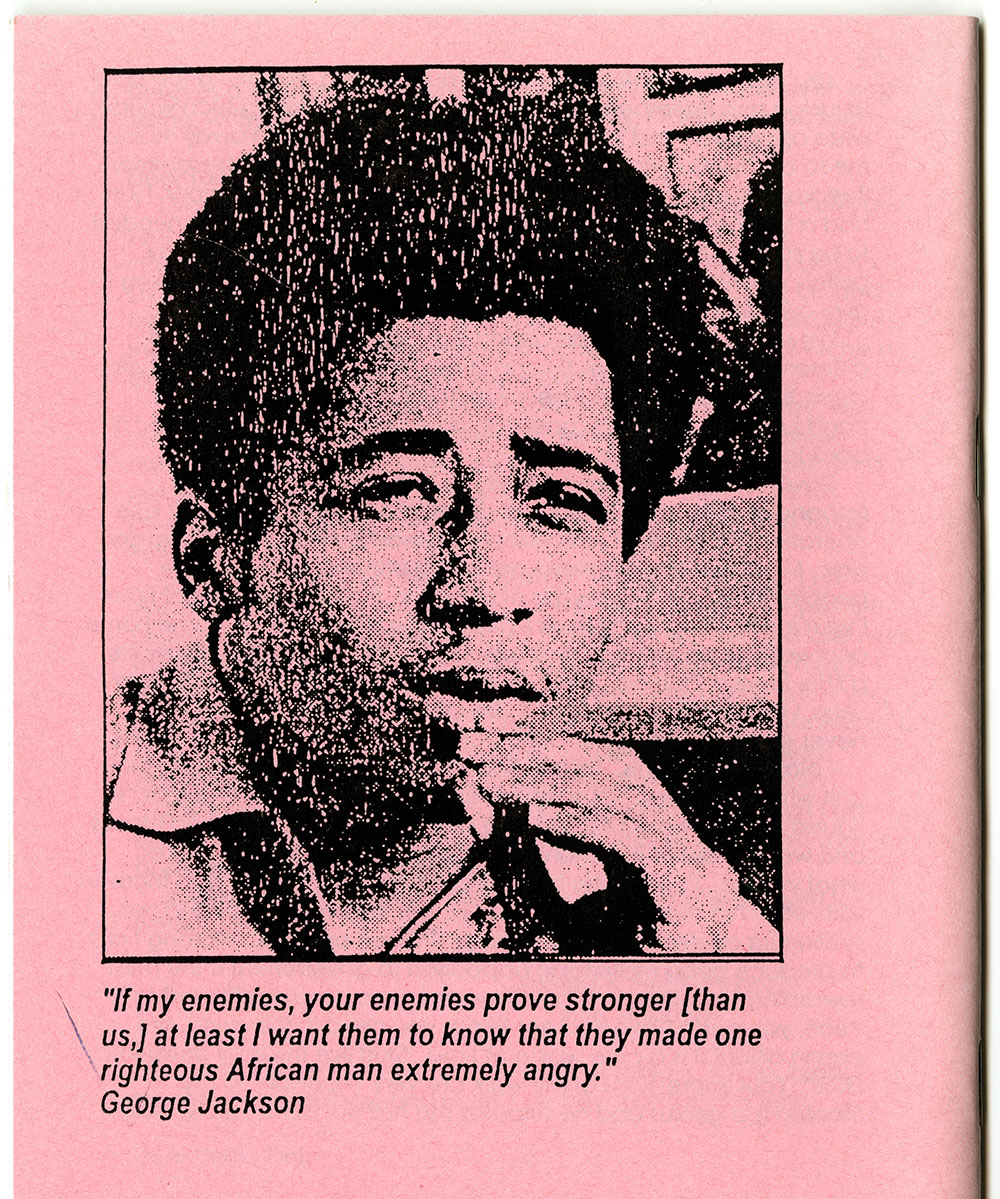
In showing the experience and humanity of prisoners, Rayson urged those outside of prison walls to attune themselves to the “powerful education of which prisoners are capable,” noting that “without the humanity, freedom, and counsel from conscious prisoners, I myself would be in a constant state of dread and despair.” Image from Anthony Rayson Zine Collection. Back cover of Thought Bombs Issue #6 (featuring image of prison activist George Jackson [1941-1971]). (Quote found in Prisons & Society, self-published zine. Rayson, Anthony. Prisons & Society ([1999-2007]). Anthony Rayson Zine Collection, box 2, folder entitled “Mini Zines/Prisons&Society, 1999-2007.” DePaul University Special Collections and Archives.)
Courtesy of: Anthony Rayson (collection at DePaul University Special Collections and Archives).
Believing that...
Lunatic Wine
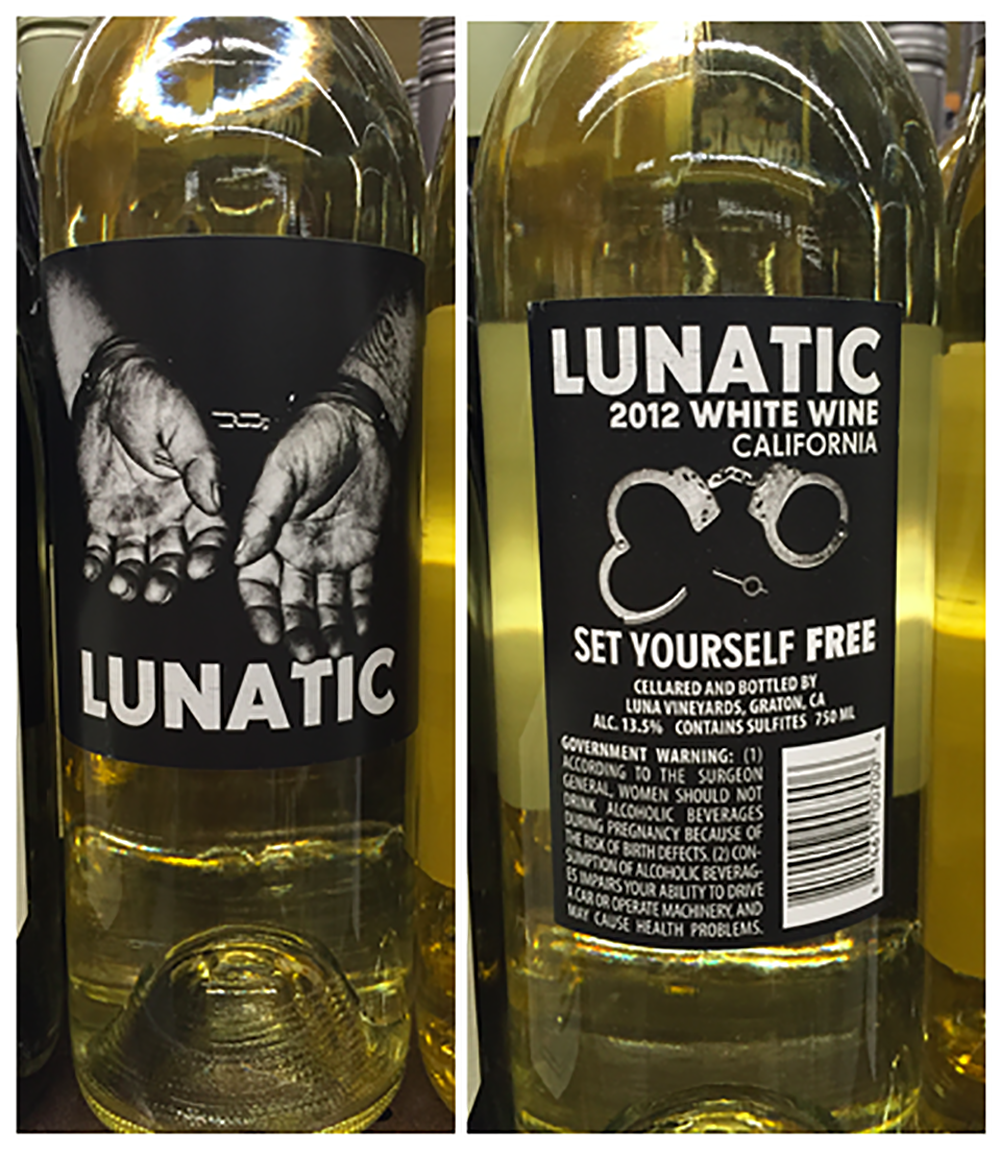
Focusing on the intersections of incarceration and mental illness has not been an easy task. While often deeply fulfilling and extremely disheartening at the same time, this project has allowed us to develop a critical lens through which to view certain elements of popular culture and mass media. With the explosive popularity of television shows like Orange is the New Black and American Horror Story: Asylum, many Americans are becoming aware of the imprisonment of people with mental illness, both contemporarily and historically. Even though images and representations of this issue have seemingly grown in the past few years, we began to wonder how these over-the-top, romanticized ideas have affected commercial culture. Considering the combination of images and text found...
John Zwara: Artist and Patient
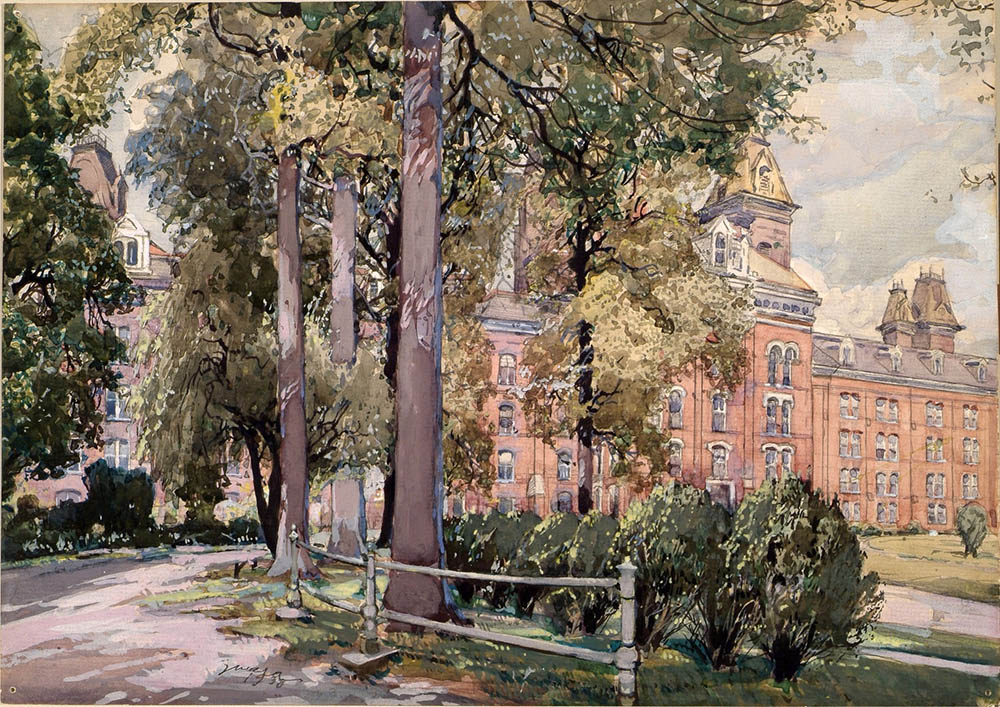
“When people got too interested in him, he went back to sleeping under bridges,” Rachel Berenson Perry, fine-arts curator at the Indiana State Museum, said of Depression-era artist John Zwara’s six month stay at Central State Hospital for the Insane in 1938. Little is known of the Hungarian immigrant who wandered the United States in the early 1900s, painting mostly landscapes and watercolors, and settled in Indianapolis in the 1930s. Diagnosed with schizophrenia, Zwara preferred a life of solitude in which he could focus on his work; oftentimes, this meant living without a home on the streets of Indianapolis, according to Perry. Zwara’s work, however, was brought to the forefront in local news when the Indiana Medical History Museum (IMHM),...
Asking "What's Going on" About a Newspaper Blurb
“Two white inmates of the Indiana female prison set fire to the building because they were compelled to eat with colored inmates.” That is all that is said about a fire, racial tensions, and prison life in a column of an Indianapolis newspaper in 1892. The short blurb raises a series of questions: Were the living quarters in prison segregated by race at this time? What were the conditions these women were living in and how were they able to start a fire? Were they any casualties of this fire? What happened to the women who set the fire? What was the role of the wardens? What were the perspectives of the black women? From the short blurb, we can...
- ‹ previous
- 2 of 4
- next ›